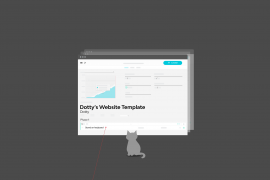A bit on the side
We recently changed our mind about employees freelancing – we now believe that freelancing can be a positive experience for everyone – but we didn’t always think that way.
Like many business owners, we had little time, or inclination, to formalise procedures when we first began employing other designers.
This meant that when a studio member was ‘caught’ freelancing on our time, with our equipment, we were shocked and unprepared.
We were also shocked when we found over a hundred colour prints hidden in a drawer, and then more shocked a month later when a supplier (that we had never used) suggested that we were liable for an outstanding account because the account service person had believed the purchase could be traced back to our business. (He had contacted the designer on our phone number, called to see him (in the foyer) at our address, so felt justified in assuming that the job was placed on behalf of Mackay Branson design.)
Our immediate reaction was to include a paragraph in all future employment contracts forbidding our designers freelancing whilst in our employment – which was hardly building relationships on trust.
A few years later and we had a change of heart.
We now think that limited, occasional freelance projects can be as beneficial to the studio, as to the designer.
Our studio has a strong list of very loyal clients – many of whom we have worked with over the past 10 years.
This makes for a great business, but can seem limiting for some designers, especially after the initial design work for a client has been finalised and the ensuing work follows branding guidelines.
Add to this the fact that our work is very information-based and text heavy, so – and don’t get me wrong, I love the design work we do – the chance of taking on smaller projects is enticing, even for me.
We now have a mutual agreement with our designers.
Freelance projects are welcome as long as they:
- don’t compete with our existing or potential clients
- are not done within ‘normal’ working hours, (although under negotiation designers will sometimes work through their lunch hour and ‘purchase’ colour prints from us), and
- are done openly so everyone knows what’s happening in the studio.
These guidelines are now written into our employee contracts and are open for discussion.
Summary
Now there is trust on both sides, it’s easy to see the benefits of the occasional freelance job. They can stimulate a different type of creativity than we can offer and they give designers additional experience. Now they’re done in the open, they’re often used in group discussions, or as a chance to use an unusual production method, so we all benefit.








